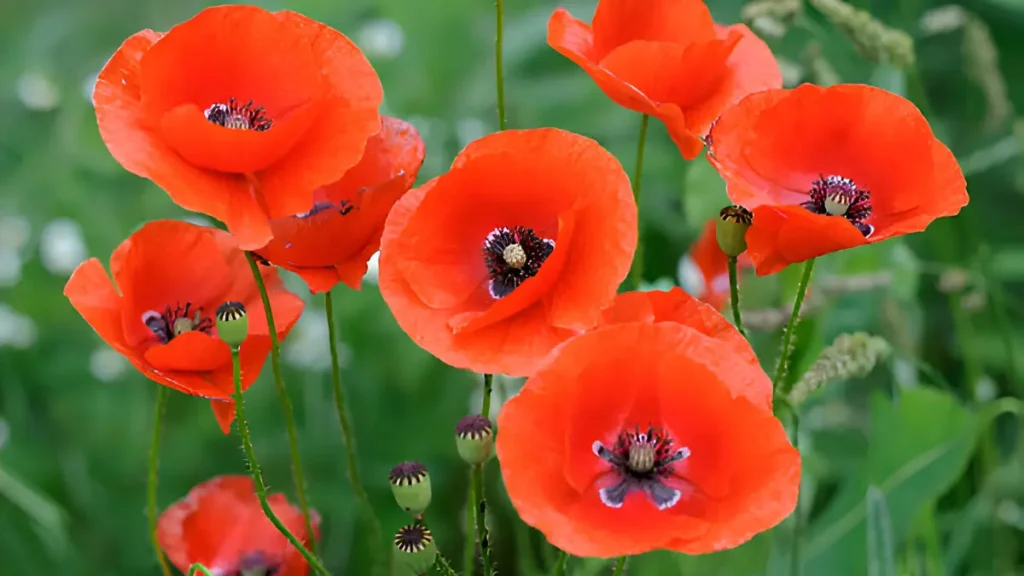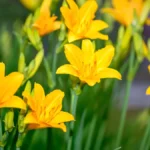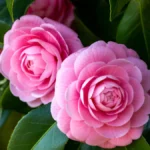Poppies are among the most attractive flowers, and they can instantly enhance the beauty of any garden. With their delicate petals, brilliant hues, and symbolic meaning, poppies provide a timeless beauty that gardeners and nature lovers appreciate. Whether you are a seasoned horticulture or a beginner, adding poppies to your flower garden can turn it into a beautiful paradise. You need to know to grow and appreciate these lovely flowers.
What do poppies symbolize?
Poppy flowers represent remembering and reverence, particularly for fallen soldiers, because of their association with World War I. They also represent peace, sleep, comfort, and beauty. Poppies can represent perseverance, endless life, or love and sacrifice in many cultures.
Why should you plant poppies in your garden?
There is a poppy to suit every taste, ranging from the timeless red of the famous Flanders Poppy to the whimsical pastel hues of Icelandic Poppies.
Poppies give your garden depth and significance, representing resilience, peace, and remembering.
These flowers are perfect for gardeners of all skill levels because they are relatively easy to grow and flourish in various environments.
Popular types of poppies to grow:
1. Oriental poppies (Papaver orientale)
A common perennial poppy for landscape applications. features intriguing pods but isn’t often used as a cut flower. Oriental poppies are popular among gardeners because of their big, showy blooms. They range in color from flaming red to delicate whites, and their petals frequently have eye-catching patterns.
2. California poppies (Eschscholzia californica)
These resilient annuals brighten any garden with their beautiful orange and gold blooms. They are ideal for cottage-style gardens or wildflower meadows and do well in sunny locations.
3. Icelandic poppies (Papaver nudicaule)
The ideal poppy variety for usage as cut flowers. Although it is technically a perennial, it is typically planted as an annual or biennial because it is short-lived and dislikes heat. If picked at the right time and treated to extend their vase life (more on that later), Iceland poppies have the longest vase life of any poppies, lasting almost five days. Icelandic poppies are great for milder regions and blossom in beautiful pastel tones with their ethereal, tissue-paper-like petals.
4. Himalayan blue poppies (Meconopsis betonicifolia)
These rare and in-demand blue poppies give shady gardens a touch of exoticism. Their stunning beauty is a prize for meeting certain requirements.
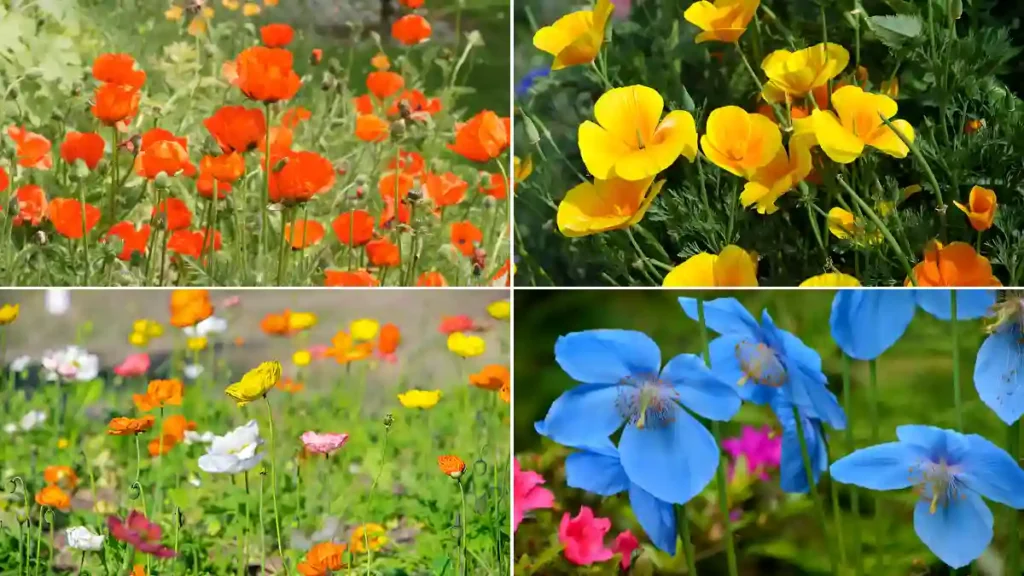
Step-by-step guide on how to grow poppies:
Poppies thrive in moderately fertile, well-drained soil with a loamy or sandy texture and pH between 6.0 and 7.0, and can benefit from organic matter like compost.
The majority of poppies need at least six hours of direct sunlight per day to flourish. Select a location away from high winds to avoid damaging fragile petals.
Plant annual poppies in late autumn or early spring, while perennial cultivars can be planted in fall. Spread seeds on the soil’s surface, gently press them down, and ensure they are 6-12 inches apart for optimal growth.
Poppies require moderate watering, keeping soil damp but not soggy during germination, and applying a low-nitrogen, balanced fertilizer to promote flowers during growth season.
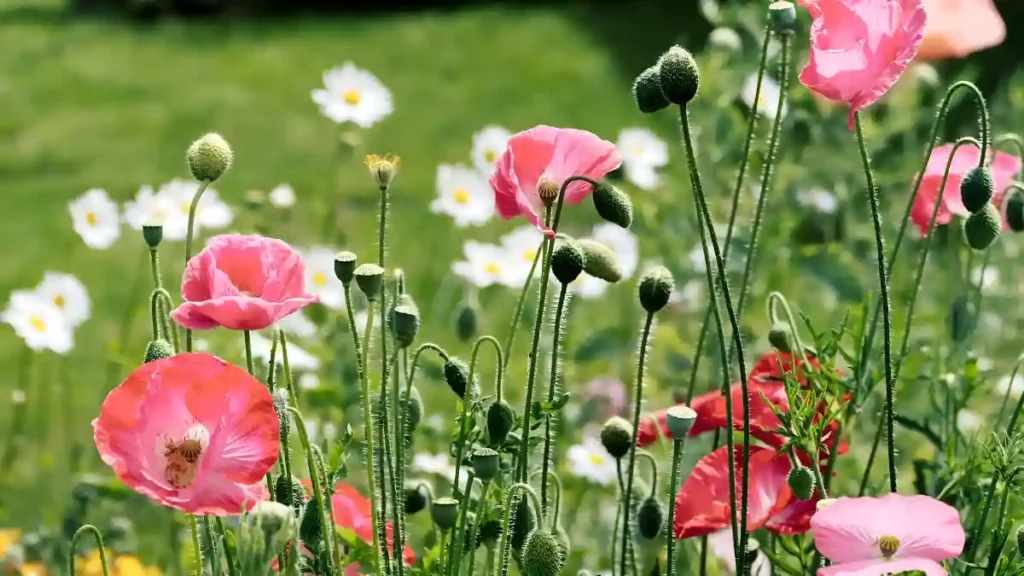
How to take care of your poppies:
Deadhead flowers regularly to prolong the blossoming season, then trim back leaves after flowering to refocus on root growth.
Ensure pest control by utilizing natural deterrents like diatomaceous earth or neem oil, avoid overhead irrigation, and maintain proper air circulation to prevent fungal infections.
Conclusion:
By adding poppies to your garden, you can connect with a rich tapestry of meaning and history while also improving the garden’s aesthetic appeal. Poppies are a classic choice for gardeners all over the world because of their gorgeous blooms and low maintenance requirements.
Certainly! If you’d like to learn more, please consider following our WhatsApp Channel: Harvest Gardening
A frequently asked questions:
Q1: Are poppies perennials?
A1: Oriental poppies (Papaver orientale) are perennials, whereas the common corn poppy (Papaver rhoeas) is an annual. The type of poppy affects its growth cycle and longevity.
Q2: What birth month is the poppy?
A2: Poppy is the birth flower for August. It represents inventiveness, reminiscence, and pleasant sleep.
Q3: What is the best month to plant poppies?
A3: The optimum month to plant poppies varies by climate, but they are often planted in the fall or early spring. Fall planting is great in warm climates because it allows seeds to germinate and develop strong roots throughout the winter.
Q4: How to grow a poppy plant at home?
A4: To grow poppies at home, sprinkle seeds in well-drained soil in a sunny location, either in early spring or fall. Lightly press the seeds into the soil without covering them, as they require light to develop. Water sparingly.

